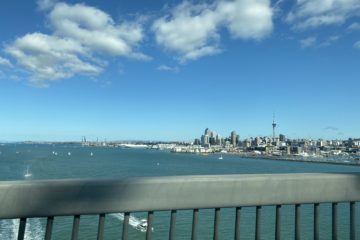A colonial village created in New Zealand by houses and cottages rescued from the surrounding suburb of Howick in Auckland.
Governor George Gray feared the French people will move from New Caledonia and Tahiti to New Zealand, while Maori leader Hone Heke caused unrest with new settlers in the north. He pointed out, in particular, that British settlers are not welcome here. As a result, the governor asked England for help protecting a nascent settlement in Auckland, which later became the capital city of New Zealand.
England decided to send retired soldiers who had returned home from fighting in Afghanistan, India, Malta, etc. They were called upon to form an army corps here, known as the Royal New Zealand Fencible Corps, which would defend Auckland in the event of an attack.
The soldiers had the opportunity to bring their wives with children. At that time, it was the largest immigration program, as approximately 2,500 people settled here. They arrived between 1847-1852, it was a total of 10 ships were sent and most of the voyages lasted 3-4 months.
The offer included free entry to New Zealand, a two-room cottage and an acre of land in exchange for a 7-year period of service. The main duty was to participate in military Sunday parades and a one-year job offer in public work programs (construction of roads and bridges). They were called up for military service only once in 1851.
Nothing was prepared for the first 4 ships, only tents and raupo cottages. However, after 7 years of service, they had cottages and an acre of land in their ownership. Later they could buy more land for a very good price. Only 3 people returned to Europe. Financially, this program was very successful.
History of the village
On May 23, 1962, a public meeting was held, chaired by B. Kendrick. It was decided to create the “Howick Historical Society” and preserve the historic buildings in Howick. Mr B. Kendrick was elected the first president.
The beginnings of the company began with the celebration of the 100th anniversary of the Church of All Saints in November 1947. On this occasion, an exhibition of furniture and artifacts was organized, which was a success. In 1949, others joined in, who were interested in preserving the original buildings. There was the idea of a colonial village where these buildings would be set in a historic setting.
Some of Howick Colonial Village’s ideas came from society members’ trips (for example, to the New England Outdoor History Museum in Old Sturbridge Village, Massachusetts on the Mystic Coast of Connecticut).
The Bell family offered Bell House and 5 acres next to the house in 1972. Later, the place was expanded to 7 acres and the foundation of Howick Historical Village was created.
It took eight years for the area to become a living museum. Many thanks especially to the working volunteers. Funding for the relocation of buildings and their restoration came largely from the sale of Christmas cards and cake stalls. Support from local people also contributed. On March 8, 1980, Howick Historical Village was officially opened.
Village today
The village is open to the public every day except Christmas Day, New Year, Good Friday and ANZAC Day from 10:00 to 16:00. The third Sunday of each month (except December) is held so-called live days, in which the village comes to life with many costumed volunteers who revive everyday life in Victorian New Zealand times.
Part of the village is a beautiful cafe with a garden, which you must not miss when visiting!
Whether we like it or not, we continue on our way ….. we have accommodation after this stop in the north in the city of Dargaville. Here, we can enjoy a moment to relax.
In the following article, you can look forward to several stops on our way to the town of Kaitaia.









































































